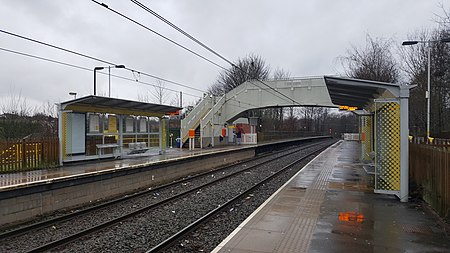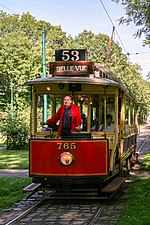Bowker Vale tram stop
Former London, Midland and Scottish Railway stationsRailway stations in Great Britain closed in 1991Railway stations in Great Britain opened in 1938Railway stations in Great Britain opened in 1992Tram stops in Manchester ... and 3 more
Tram stops on the Altrincham to Bury lineTram stops on the Bury to Ashton-under-Lyne lineUse British English from November 2016

Bowker Vale is a tram stop in the suburban areas of Bowker Vale and Blackley, Greater Manchester, England. It is on the Bury Line of Greater Manchester's light rail Metrolink system.
Excerpt from the Wikipedia article Bowker Vale tram stop (License: CC BY-SA 3.0, Authors, Images).Bowker Vale tram stop
Northurst Drive,
Geographical coordinates (GPS) Address Nearby Places Show on map
Geographical coordinates (GPS)
| Latitude | Longitude |
|---|---|
| N 53.5249 ° | E -2.2499 ° |
Address
Bowker Vale
Northurst Drive
M8 4LS , Sedgley Park
England, United Kingdom
Open on Google Maps









